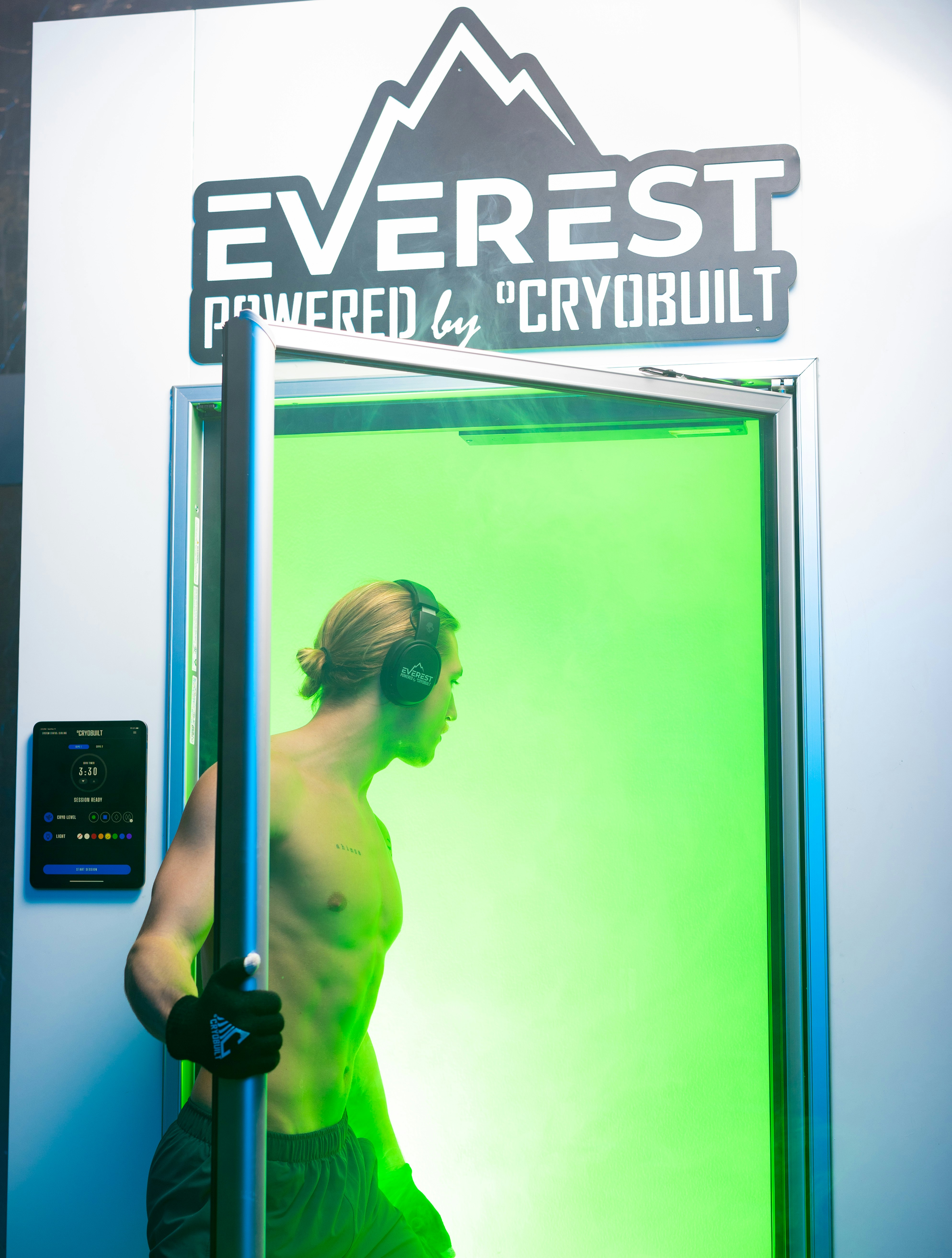Have you ever wondered how your body responds to extreme temperatures? More specifically, have you thought about the effects of taking a sudden plunge into icy water? Cold plunge therapy, also known as cold water immersion, is becoming increasingly popular as an alternative wellness practice, claimed to have myriad health benefits, including impacts on your hormonal balance. But what exactly does this cold exposure do to your hormones, and why should you care?
Understanding Cold Plunge Therapy
Cold plunge therapy involves immersing yourself in icy water, generally for a limited period. While it might sound daunting, many people swear by its rejuvenating effects. But what exactly happens to your body during this chilly ordeal?
At the core of this therapy is the concept of exposing your body to extreme cold temperatures in order to trigger various physiological responses. These responses could include an improved immune system, enhanced mental clarity, and perhaps even altered hormonal balance.
What Happens to Your Body During Cold Plunge Therapy?
When your body encounters cold water, it prompts a shock response that can lead to several physiological changes. Your heart rate increases, blood vessels constrict, and blood flow is directed toward your internal organs to preserve core temperature. In addition, a flood of hormones is released in response to the cold stress.
This is where the link between cold plunge therapy and hormonal balance comes into play. It’s not merely about braving the cold; it’s about understanding how your body adapts to such a dramatic environment.
Hormones: The Bodily Regulators
Before diving deeper into how cold plunges affect hormones, it’s essential to understand what hormones are and their role in your body. Hormones are chemical messengers that travel through your bloodstream, carrying signals to various tissues and organs.
Key Hormones Affected by Cold Plunge Therapy
Several hormones can be influenced by cold plunge therapy. Here are a few significant ones:
- Adrenaline and Noradrenaline: These stress hormones increase during cold exposure, resulting in heightened alertness and elevated energy levels.
- Cortisol: Known as the stress hormone, cortisol can be impacted by cold exposure, though the effects may vary depending on the individual and their stress response.
- Endorphins: Often referred to as the body’s natural painkillers, endorphins can be released during cold water immersion, potentially leading to feelings of euphoria.
- Testosterone: There is some evidence suggesting that cold exposure might influence testosterone levels, which could be of particular interest to those concerned about muscle growth or libido.
The Endocrine System: Your Hormone Factory
Your endocrine system is like a finely tuned orchestra where hormones are the instruments. Each hormone has a unique role, and its balance is crucial for your overall health. Cold plunge therapy can have a direct impact on this system, potentially leading to beneficial changes if done correctly.
How Cold Plunge Therapy Influences Hormonal Balance
The way cold plunge therapy affects your hormonal balance is intricate and involves several biological mechanisms. Let’s delve into how this process works, from the initial shock of cold exposure to the eventual hormonal changes you might experience.
Initial Shock: The Rush of Adrenaline
Jumping into icy water isn’t just invigorating—it’s a full-body wake-up call. The initial shock invokes an adrenaline rush, which is your body’s way of preparing to cope with sudden stress. Though adrenaline is commonly associated with the fight-or-flight response, this regulated exposure to stress can enhance your energy and focus.
Cortisol: Balancing Stress and Recovery
While an initial bout of cold can increase cortisol, repeated exposure might actually help reduce chronic stress levels by improving your overall stress response. This adaptive mechanism can recalibrate how your body handles stress over time, potentially leading to lower baseline cortisol levels.
Endorphins: The Afterglow
One of the most appealing aspects of cold plunge therapy is the release of endorphins. After the initial shock, your body rewards you with a surge of these feel-good hormones, which can reduce pain and lead to feelings of happiness and contentment. It’s like achieving a natural high that boosts your mood for the rest of the day.
Testosterone: The Debate
While the increase in testosterone due to cold exposure continues to be debated, some studies suggest that cold therapy might help maintain or slightly boost testosterone levels. This can be particularly beneficial for men concerned about muscle mass, energy levels, and overall vitality.
Scientific Evidence Supporting Cold Plunge Therapy
When it comes to the effects of cold plunge therapy on hormonal balance, scientific evidence is still emerging. However, several studies provide promising results regarding its potential health benefits.
Examining the Research
A study conducted by Vollstadt-Klein et al. in 2009 found that cold water immersion elicited an increase in dopamine, which is a neurotransmitter often linked to motivation and pleasure. Other studies have indicated that habitual cold exposure may boost norepinephrine, another neurotransmitter that acts similarly to adrenaline, thereby improving mood and focus.
Furthermore, research published by Castellani et al. in 2016 illustrated how regular cold exposure might amplify the body’s adaptation process, where hormonal fluctuations become more stabilized over time. Although the precise mechanisms are still being explored, these findings hint at a favorable balance between stress and recovery facilitated by cold exposure.
Beyond Hormones: Additional Benefits
While hormonal balance is a significant aspect, the benefits of cold plunge therapy don’t end there. Some studies suggest improvements in circulation, immune function, and even sleep quality. By understanding that cold therapy is a holistic approach, you can appreciate how it might contribute to overall well-being.
Practical Tips for Trying Cold Plunge Therapy
Intrigued by the potential benefits of cold plunge therapy? Here are some practical tips on how you can safely incorporate it into your wellness regimen.
Start Slow: Gradual Exposure
If you’re new to the idea of cold water immersion, it’s crucial to start slow. Begin with cool showers and gradually work your way to colder temperatures. This allows your body to adjust and helps minimize the shock factor.
Safety First: Consult a Professional
Before embarking on any new therapy, especially one involving extreme temperatures, it’s wise to consult with a healthcare professional. They can provide guidance on whether this approach suits your health condition and offer tailored advice based on your needs.
Creating a Routine: Consistency is Key
For the best results, try to incorporate cold plunge therapy regularly. This could mean weekly sessions or adding cold showers to your daily routine. Consistency can enhance your body’s adaptation to cold stress, potentially improving the benefits.
Addressing Common Concerns and Misconceptions
Like any wellness trend, cold plunge therapy comes with its share of concerns and misconceptions. Here, we’ll address some of the most common queries you might have.
Is Cold Plunge Therapy Safe for Everyone?
While many individuals can benefit from cold plunge therapy, those with certain medical conditions, such as cardiovascular issues, should exercise caution. Always consult a healthcare provider to assess your unique situation.
Can Cold Exposure Cause Harm?
Moderation is critical. Excessive or prolonged exposure to cold can lead to hypothermia or frostbite. It’s vital to monitor your body’s reaction and discontinue the practice immediately if you experience adverse effects.
Clearing the Misconceptions
It’s easy to get swept up in the enthusiasm for cold plunge therapy, but remember that it is not a cure-all for health issues. It’s one aspect of a comprehensive wellness routine and should be combined with other healthy habits such as a balanced diet, regular exercise, and adequate sleep.

The Future of Cold Therapy and Wellness
As research continues to evolve, the understanding of cold plunge therapy within the scientific community is expected to deepen. Future studies might unveil even more about its effects on hormonal balance, potentially influencing how cold therapy is integrated into broader health and wellness practices.
Emerging Trends in Cold Therapy
In addition to cold plunge pools, innovations such as cryotherapy chambers have gained popularity, offering a more controlled cold exposure environment. These technologies might provide new insights into the most effective ways to achieve hormonal balance through cold exposure.
Building a More Resilient Body
Ultimately, the goal of cold plunge therapy—and similar wellness practices—is to build a more adaptable and resilient body. Understanding how your body responds to stress, whether physical or emotional, and adapting accordingly is the cornerstone of holistic health.
Embracing the Rejuvenating Chill
You might view cold plunge therapy as a challenging endeavor or an opportunity for personal growth. Embracing this practice can prompt you to step out of your comfort zone and explore the limits of what your body can achieve.
Finding Balance Through Cold Therapy
Cold plunge therapy isn’t solely about the immediate thrill of a cold shock; it’s about fostering balance and harmony within your body. Through its potential to recalibrate your hormonal pathways and invigorate your mind and spirit, cold therapy offers a unique avenue for personal and health development.
Whether you’re seeking to bolster your mental fortitude, improve your physical health, or simply looking to add a refreshing element to your routine, cold plunge therapy provides a captivating way to explore the intricate dance of your body’s inner workings.
In the end, the impact of cold plunge therapy on your hormonal balance might just be the beginning of a more profound journey towards wellness. Each dip, each chilly encounter, is a step toward understanding and enhancing the harmonious symphony that is your health.





